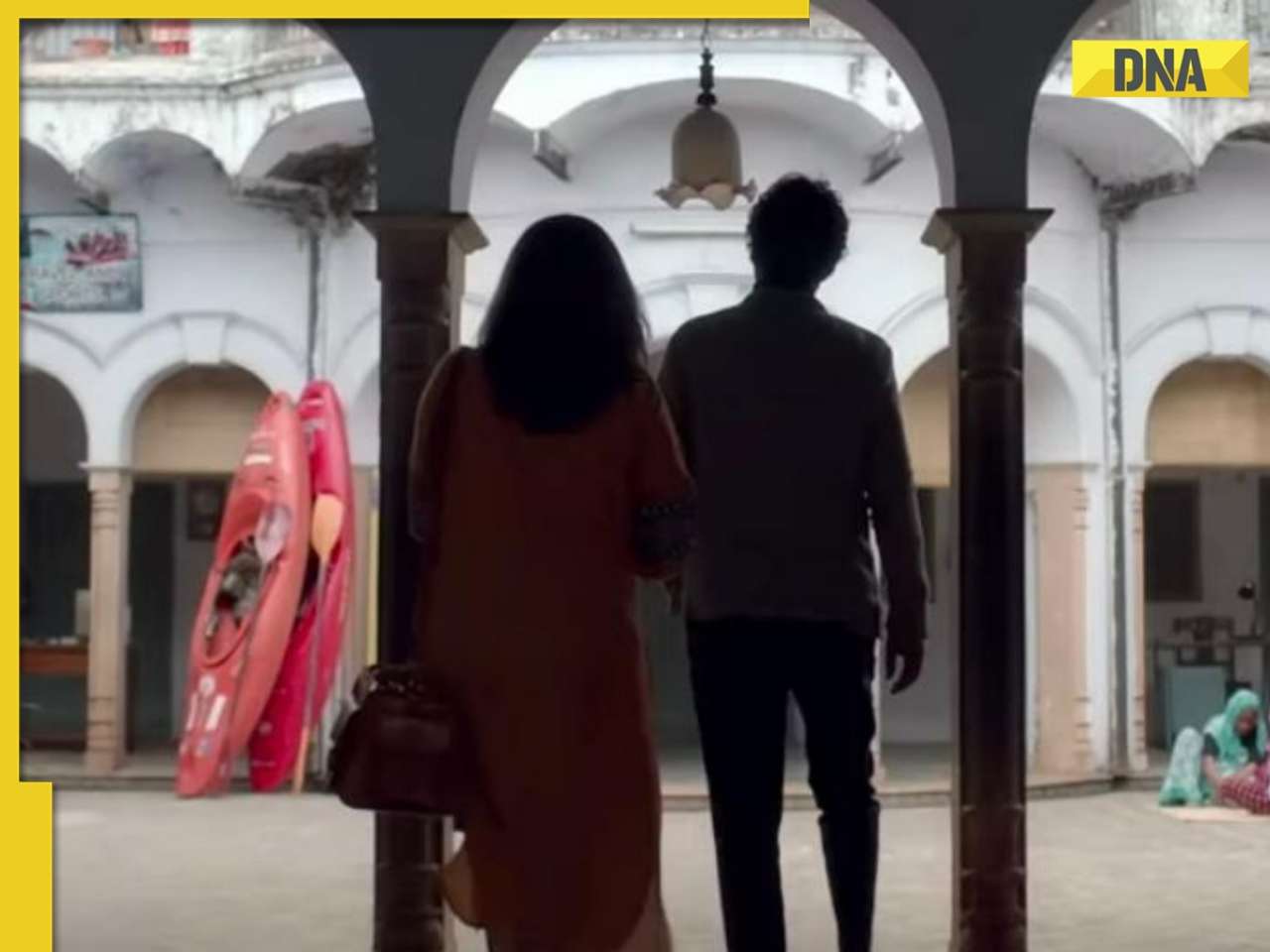An Indian researcher in the US develops a ‘multi-eyed’ camera that uses smart software to capture pro quality photos.
With many phone manufacturers these days, the name of the game is ‘a camera that rivals DSLRs’. From the big brands to the legions of Chinese manufacturers, each is vying for photography chops that prompt you to ditch your regular camera altogether. But if this tiny company from Palo Alto, California, has its way, they just might be the first to make it happen.
Known simply as ‘Light’, the company has invented an admittedly alien-looking camera clearly packed to the gills with multiple lenses, which teams up with advanced algorithms that deliver pro photo level shots. Best of all, it accomplishes this feat using good old physics along with smart image processing, instead of resorting to quick fixes and workarounds that many current-day smartphone cameras tend to employ.
The brains behind this camera is Rajiv Laroia, an IIT Delhi alumnus who has in the past played R&D roles in fields including LTE networking and optics development. The camera that he and his team have developed is poised at bridging the challenge of high photographic quality with pocketable portability.
Where conventional DSLR cameras have large image sensors and lenses containing plenty of high-quality glass, these very factors make them both bulky and expensive. Cell phone cameras on the other hand use plastic lenses that team up with much smaller sensors, meaning they are able to receive only a small amounts of light from a scene that result in grainy pictures--especially in low-light environments. Also being housed in space constrained smartphones, these cameras have fixed focal lengths and tiny apertures that stifle artistic expression. So pushing photography limits with a camera phone implies using techniques like image recognition to create blur effects, in a bid to simulate the shallow depth of field generally produced by conventional DSLR cameras.

Not so with this new device--as evident from the photo, the camera consists of what appears to be a spider’s head of eyes, 16 in all, where each lens has its own 13MP sensor. The camera effectively captures a scene from all these sensor simultaneously, where these multiple photos are combined digitally from groups of lenses to create a single composite frame. Apart from letting the photographer select the zoom in the final photo, she can also select aspects like depth of field even after the shot is taken.
These 16 individual lenses are grouped across three different focal lengths—five are 28mm equivalent, five are 70mm equivalent, and six are 150-mm equivalent and all of these lenses have an aperture of f/2.4. The magic, however, lies in the way these lenses are arranged.
Five of these lenses point straight out of the camera, while the remaining 11 can actually point sideways. Attached to each lens is an element that moves it back and forth for focusing, but with the sideways lenses there is an additional mirror that can be moved to capture a straight or a side shot.
When capturing a photo the camera’s algorithms select 10 of the 16 camera modules depending on the zoom level selected, where the component images are combined into a single large image. For example when capturing a photo at 28mm (such as a wide angle shot of a landscape,) several lenses jump into action: all five 28mm cameras capture the scene albeit with each doing so from their slightly different perspective, all five 70mm lenses also capture a shot where each captures a quarter of the scene due the focal length’s zoom. Finally a fifth 70mm module pointing at the centre of the frame captures extra detail from the center of the image.
Image data from all of these cameras are combined using an algorithm that extracts scene details based on the optics and viewpoint of each lens. The resulting combined photo is up to 52MP in size. Interestingly this image combination can be done either on the phone or on a computer running their software, which uses the same algorithm.
A similar process happens when capturing a 70mm shot or a 150mm zoom shot. For in-between focal ranges the camera captures a wider field of view using the technique above, then crops the photo to match the required focal length.
This camera will use off-the-shelf parts including plastic lenses currently deployed in smartphones, conventional image sensors, even a Snapdragon 820 processor that does all of the processing within an Android operating system. The Light L16 camera described here is expected to be commercially available for $1,699 (approximately Rs 1,13,485) by early next year, and the company aims to propagate this technology into affordable smartphones in future.
![submenu-img]() Raj Shekhar reacts to AI-generated Mohammed Rafi version of 'Pehle Bhi Main': 'I sent it to my father' | Exclusive
Raj Shekhar reacts to AI-generated Mohammed Rafi version of 'Pehle Bhi Main': 'I sent it to my father' | Exclusive ![submenu-img]() 'Unwarranted, unsubstantiated claims': India slams US media report on alleged Pannun murder plot
'Unwarranted, unsubstantiated claims': India slams US media report on alleged Pannun murder plot![submenu-img]() JD(s) to suspend NDA Hassan candidate Prajwal Revanna: Kumaraswamy
JD(s) to suspend NDA Hassan candidate Prajwal Revanna: Kumaraswamy![submenu-img]() AstraZeneca admits its COVID-19 vaccine Covishield can cause rare...
AstraZeneca admits its COVID-19 vaccine Covishield can cause rare...![submenu-img]() Shekhar Suman slams young actors who ‘want stardom overnight’: ‘Why do they act…’
Shekhar Suman slams young actors who ‘want stardom overnight’: ‘Why do they act…’![submenu-img]() DNA Verified: Is CAA an anti-Muslim law? Centre terms news report as 'misleading'
DNA Verified: Is CAA an anti-Muslim law? Centre terms news report as 'misleading'![submenu-img]() DNA Verified: Lok Sabha Elections 2024 to be held on April 19? Know truth behind viral message
DNA Verified: Lok Sabha Elections 2024 to be held on April 19? Know truth behind viral message![submenu-img]() DNA Verified: Modi govt giving students free laptops under 'One Student One Laptop' scheme? Know truth here
DNA Verified: Modi govt giving students free laptops under 'One Student One Laptop' scheme? Know truth here![submenu-img]() DNA Verified: Shah Rukh Khan denies reports of his role in release of India's naval officers from Qatar
DNA Verified: Shah Rukh Khan denies reports of his role in release of India's naval officers from Qatar![submenu-img]() DNA Verified: Is govt providing Rs 1.6 lakh benefit to girls under PM Ladli Laxmi Yojana? Know truth
DNA Verified: Is govt providing Rs 1.6 lakh benefit to girls under PM Ladli Laxmi Yojana? Know truth![submenu-img]() Remember Heyy Babyy's cute 'Angel' Juanna Sanghvi? 20 year-old looks unrecognisable now, fans say 'her comeback will...'
Remember Heyy Babyy's cute 'Angel' Juanna Sanghvi? 20 year-old looks unrecognisable now, fans say 'her comeback will...'![submenu-img]() In pics: Arti Singh stuns in red lehenga as she ties the knot with beau Dipak Chauhan in dreamy wedding
In pics: Arti Singh stuns in red lehenga as she ties the knot with beau Dipak Chauhan in dreamy wedding![submenu-img]() Actors who died due to cosmetic surgeries
Actors who died due to cosmetic surgeries![submenu-img]() See inside pics: Malayalam star Aparna Das' dreamy wedding with Manjummel Boys actor Deepak Parambol
See inside pics: Malayalam star Aparna Das' dreamy wedding with Manjummel Boys actor Deepak Parambol ![submenu-img]() In pics: Salman Khan, Alia Bhatt, Rekha, Neetu Kapoor attend grand premiere of Sanjay Leela Bhansali's Heeramandi
In pics: Salman Khan, Alia Bhatt, Rekha, Neetu Kapoor attend grand premiere of Sanjay Leela Bhansali's Heeramandi![submenu-img]() DNA Explainer: Why Harvey Weinstein's rape conviction was overturned, will beleaguered Hollywood mogul get out of jail?
DNA Explainer: Why Harvey Weinstein's rape conviction was overturned, will beleaguered Hollywood mogul get out of jail?![submenu-img]() What is inheritance tax?
What is inheritance tax?![submenu-img]() DNA Explainer: What is cloud seeding which is blamed for wreaking havoc in Dubai?
DNA Explainer: What is cloud seeding which is blamed for wreaking havoc in Dubai?![submenu-img]() DNA Explainer: What is Israel's Arrow-3 defence system used to intercept Iran's missile attack?
DNA Explainer: What is Israel's Arrow-3 defence system used to intercept Iran's missile attack?![submenu-img]() DNA Explainer: How Iranian projectiles failed to breach iron-clad Israeli air defence
DNA Explainer: How Iranian projectiles failed to breach iron-clad Israeli air defence![submenu-img]() Raj Shekhar reacts to AI-generated Mohammed Rafi version of 'Pehle Bhi Main': 'I sent it to my father' | Exclusive
Raj Shekhar reacts to AI-generated Mohammed Rafi version of 'Pehle Bhi Main': 'I sent it to my father' | Exclusive ![submenu-img]() Shekhar Suman slams young actors who ‘want stardom overnight’: ‘Why do they act…’
Shekhar Suman slams young actors who ‘want stardom overnight’: ‘Why do they act…’![submenu-img]() Meet man who lived naked, alone, away from civilisation for 'cruel' reality show; remained in trauma for years, is now..
Meet man who lived naked, alone, away from civilisation for 'cruel' reality show; remained in trauma for years, is now..![submenu-img]() Meet actor, who became star overnight, was called superhero of children, later quit acting; he now works as...
Meet actor, who became star overnight, was called superhero of children, later quit acting; he now works as...![submenu-img]() This actor, who worked as AC mechanic, taught students for Rs 25, became superstar, gave multiple Rs 1000-crore films
This actor, who worked as AC mechanic, taught students for Rs 25, became superstar, gave multiple Rs 1000-crore films![submenu-img]() IPL 2024: Varun Chakaravarthy, Phil Salt power Kolkata Knight Riders to 7-wicket win over Delhi Capitals
IPL 2024: Varun Chakaravarthy, Phil Salt power Kolkata Knight Riders to 7-wicket win over Delhi Capitals![submenu-img]() 'Won't find a place in my team': Virender Sehwag slams legendary India player for his comments on T20 cricket
'Won't find a place in my team': Virender Sehwag slams legendary India player for his comments on T20 cricket![submenu-img]() 'When people create imbalances....': Virat Kohli's sister reacts to RCB batter's strike rate chatter in IPL 2024
'When people create imbalances....': Virat Kohli's sister reacts to RCB batter's strike rate chatter in IPL 2024![submenu-img]() LSG vs MI, IPL 2024: Predicted playing XI, live streaming details, weather and pitch report
LSG vs MI, IPL 2024: Predicted playing XI, live streaming details, weather and pitch report![submenu-img]() LSG vs MI IPL 2024 Dream11 prediction: Fantasy cricket tips for Lucknow Super Giants vs Mumbai Indians
LSG vs MI IPL 2024 Dream11 prediction: Fantasy cricket tips for Lucknow Super Giants vs Mumbai Indians![submenu-img]() Viral Video: 4 girls get into ugly fight on Noida road, fly punches, pull hair; watch
Viral Video: 4 girls get into ugly fight on Noida road, fly punches, pull hair; watch![submenu-img]() Private jets, pyramids and more: Indian-origin billionaire Ankur Jain marries ex-WWE star Erika Hammond in Egypt
Private jets, pyramids and more: Indian-origin billionaire Ankur Jain marries ex-WWE star Erika Hammond in Egypt![submenu-img]() Viral video captures mama tiger and cubs' playful time in Ranthambore, watch
Viral video captures mama tiger and cubs' playful time in Ranthambore, watch![submenu-img]() Heartwarming video of cat napping among puppies goes viral, watch
Heartwarming video of cat napping among puppies goes viral, watch![submenu-img]() Viral video: Man squeezes his body through tennis racquet, internet is stunned
Viral video: Man squeezes his body through tennis racquet, internet is stunned







































)
)




)
)
)
)
)
)